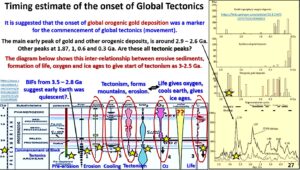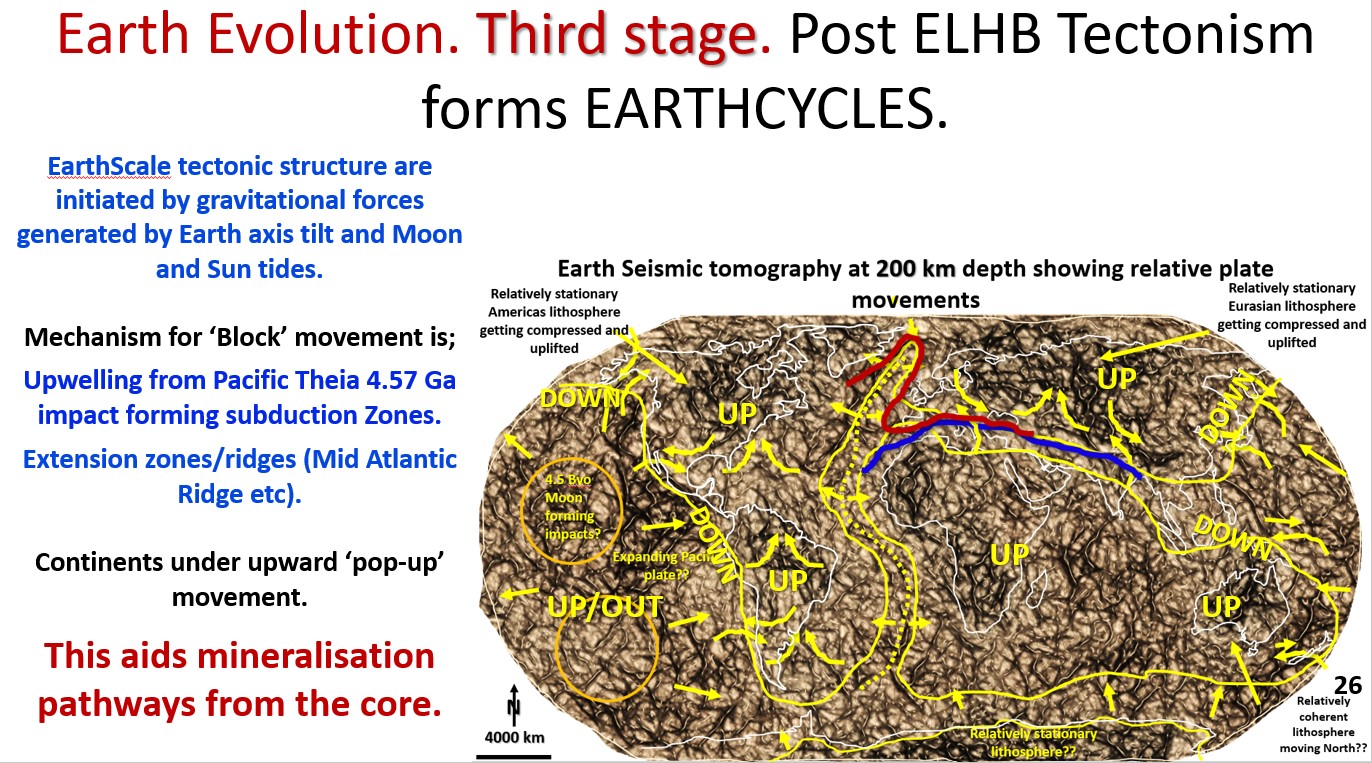Figure 26. Earth seismic tomography at 200 km depth showing relative block movements, the mid-Atlantic ridge and global subduction and uplift areas.
The AusIMM webinar I did on this new research can be seen on the AusIMM website or on https://www.youtube.com/watch?v=snu8En442Js
Earth-scale tectonic structures are initiated by out of balance gravitational forces generated by the Earth axis tilt and the moon and sun gravitational tides.
It is suggested the mechanism for this global block movement is upwelling from the Pacific Theia impact site (left side) forming the extension in the central Pacific and the subduction zones around the edge of the Pacific. The mid Atlantic Ridge (centre) is a large extension zone, extending from the Arctic to the Antarctic, and shows the global nature of this system.
If the earth had no moon and the axis was perpendicular to the orbit plane around the sun then there would be very little tectonism. Earth’s axis is tilted at 23° and it is interesting to note that this is roughly the angle of the major tectonic zones from the Pacific through to Europe seen on figure 26 (blue line at about 110°).
The orthogonal directions to this tectonic zone are shown by the Mid-Atlantic Ridge and major linear structures right across the earth at about 070°. This is about the angle of the tilted axis!
I suggest that a huge volume of material from the subduction zones descends around the outside edge of the Pacific Ocean and is melted off by the much hotter liquid Outer Core. This extra material in the Outer Core pressurises the Outer Core and puts pressure under the continents and up the ridges such as the mid-Atlantic Ridge.
The continents are thus under upward pop-up movement. This aids mineralisation pathways from the core to the surface – see next webinar.
When did these global tectonics commence?

It is suggested that gold is a good indicator for the commencement of global tectonics.
Gold cannot have formed on the surface of earth and can only form in neutron star collisions.
Thus, the widespread occurrence of gold on the surface of earth, especially the ‘younger’ gold cannot have come from impact collisions and must have come from the central core of earth.
The universe is 13.7 Ga old and the solar system is approximately 4.6 Ga old. There is plenty of time for neutron star collisions to have occurred before the formation of the solar system. Thus, during the formation of the solar system there would have been heavy metals and minerals occurrence. In the formation of Earth these metals would have been concentrated in the inner and outer core.
So, I am using the commencement of global orogenetic surface gold deposition as a marker for the commencement of global tectonics. This tight timeframe for the commencement of orogenetic gold could not happen if deposition required the right orogenetic conditions in random, accreting ‘surface’ continents all over the world. A connection to the gold rich core is needed!
The fact that there is a tight timeframe to the commencement to orogenetic gold deposition is clear evidence that the Earth has been, and is, much more solid down to the outer core than the current Plate Tectonics / Mobile Mantle model suggests.
Figure 27 shows that the global commencement of orogenetic gold deposition occurred from 2.9 to 2.6 Ga. Thus, I suggest that the Earth was cooler and relatively solid with not much material moving between the core (pressured solutions/magma) and the crust (and vice versa – subduction) before about 3 Ga.
Other markers on Earth also appear to be cyclic. The lower-central chart shows that the relationship between sedimentation, mountain building, formation of oxygen, ice ages and the formation of life appear to be related to the tectonic cycles on the lower right-hand side chart.
The next section will be on the movement of Earth’s mobile blocks.
Cheers
Bob

